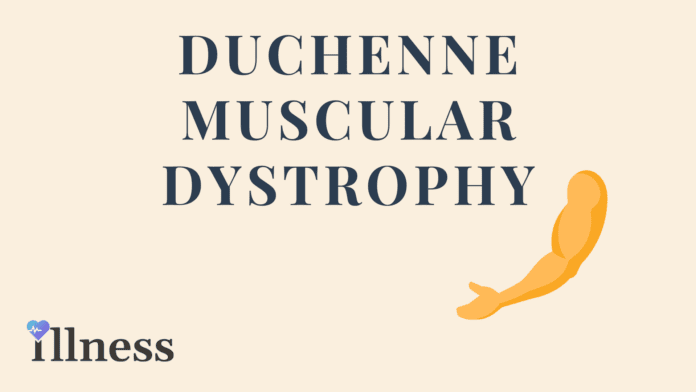Overview Of Duchenne Muscular Dystrophy
Duchenne muscular dystrophy is an inherited muscular disease. It involves muscle weakness, which quickly gets worse.
Commonly Associated With
Pseudohypertrophic muscular dystrophy; Muscular dystrophy – Duchenne type
Causes Of Duchenne Muscular Dystrophy
Duchenne muscular dystrophy is a form of muscular dystrophy. It worsens quickly. Other muscular dystrophies (including Becker muscular dystrophy) get worse much more slowly.
Duchenne muscular dystrophy is caused by a defective gene for dystrophin (a protein in the muscles). However, it often occurs in people without a known family history of the condition.
The condition most often affects boys due to the way the disease is inherited. The sons of women who are carriers of the disease (women with a defective gene, but no symptoms themselves) each have a 50% chance of having the disease. The daughters each have a 50% chance of being carriers. Very rarely, a female can be affected by the disease.
Duchenne muscular dystrophy occurs in about 1 out of every 3600 male infants. Because this is an inherited disorder, risks include a family history of Duchenne muscular dystrophy.
Symptoms Of Duchenne Muscular Dystrophy
Symptoms most often appear before age 6. They may come on as early as infancy. Most boys show no symptoms in the first few years of life.
Symptoms may include:
- Fatigue
- Learning difficulties (the IQ can be below 75)
- Intellectual disability (possible, but does not get worse over time)
Muscle weakness:
- Begins in the legs and pelvis, but also occurs less severely in the arms, neck, and other areas of the body
- Problems with motor skills (running, hopping, jumping)
- Frequent falls
- Trouble getting up from a lying position or climbing stairs
- Shortness of breath, fatigue and swelling of the feet due to a weakening of the heart muscle
- Problem breathing due to a weakening of the respiratory muscles
- Gradual worsening of muscle weakness
Progressive difficulty walking:
- Ability to walk may be lost by age 12, and the child will have to use a wheelchair.
- Breathing difficulties and heart disease often start by age 20.
Exams & Tests
A complete nervous system (neurological), heart, lung, and muscle exam may show:
- Abnormal, sick heart muscle (cardiomyopathy) becomes evident by the age of 10.
- Congestive heart failure or irregular heart rhythm (arrhythmia) is present in all people with Duchenne muscular dystrophy by the age of 18.
- Deformities of the chest and back (scoliosis).
- Enlarged muscles of the calves, buttocks, and shoulders (around age 4 or 5). These muscles are eventually replaced by fat and connective tissue (pseudohypertrophy).
- Loss of muscle mass (wasting).
- Muscle contractures in the heels, legs.
- Muscle deformities.
- Respiratory disorders, including pneumonia and swallowing with food or fluid passing into the lungs (in late stages of the disease).
Tests may include:
- Electromyography (EMG)
- Genetic tests
- Muscle biopsy
- Serum CPK
Treatment Of Duchenne Muscular Dystrophy
There is no known cure for Duchenne muscular dystrophy. Treatment aims to control symptoms to improve quality of life.
Steroid drugs can slow the loss of muscle strength. They may be started when the child is diagnosed or when muscle strength begins to decline.
Other treatments may include:
- Albuterol, a drug used for people with asthma
- Amino acids
- Carnitine
- Coenzyme Q10
- Creatine
- Fish oil
- Green tea extracts
- Vitamin E
- However, the effects of these treatments have not been proven. Stem cells and gene therapy may be used in the future.
The use of steroids and the lack of physical activity can lead to excessive weight gain. Activity is encouraged. Inactivity (such as bedrest) can make the muscle disease worse. Physical therapy may help to maintain muscle strength and function. Speech therapy is often needed.
Other treatments may include:
- Assisted ventilation (used during the day or night)
- Drugs to help heart function, such as angiotensin converting enzyme inhibitors, beta-blockers, and diuretics
- Orthopedic appliances (such as braces and wheelchairs) to improve mobility
- Spine surgery to treat progressive scoliosis for some people
- Proton pump inhibitors (for people with gastroesophageal reflux)
- Several new treatments are being studied in trials.



